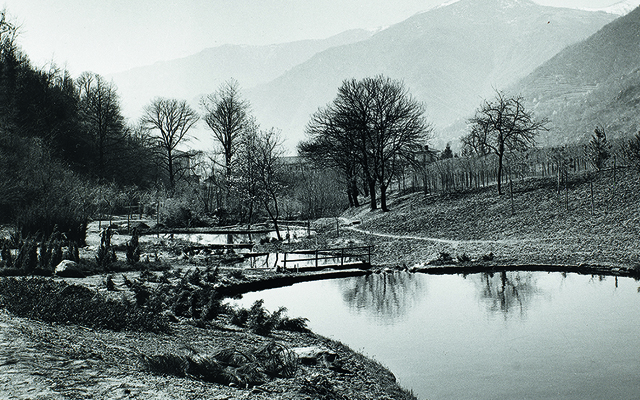Exhibition review: Russell Page at the Garden Museum in London
Helen Attlee review an exhibition on Russell Page, the first modern garden designer.


Russell Page was a master of modern garden design. His client list was long, international and elite, and The Education of a Gardener, his book on garden design, is still a seminal text. Since his death 30 years ago, very little has been done to celebrate this distinguished career and many of his landscapes have been altered beyond recognition. The opening of the Garden Museum’s exhibition will shine light on this obscure figure, finally overturning his definition of himself as ‘the most famous garden designer no one has ever heard of’.
On display will be a wonderful mix of material from private and public collections in Europe and America, combined with items drawn from Page’s own archive. Since his death, Page’s personal papers have been housed in Belgium by his close friends, the de Belders. The family recently decided to deposit them with the Garden Museum, thus making a magnificent contribution to Britain’s first archive of modern garden design.
The exhibition is a perfect demonstration of the purpose of this new archive, which kicks back against past carelessness, challenging our tendency to lose vital documents connected to the design of modern gardens and demonstrating the insight that carefully conserved plans, notes, photographs and even account books can give into a designer’s working practice.
For exhibition curator Russell Clark, the archive’s arrival has been a portal to Page’s studio. Among a sea of papers, he has found plans for gardens to surround many of the largest country houses in Europe and America, places where Page would be invited to settle comfortably into a spare bedroom, returning rep-eatedly until his job was done.
The plans for more than 500 projects realised over a career spanning nearly 50 years are now safely lodged in the archive. Page’s work never became formulaic and so each project has a different lesson to teach us. Take the gardens of Villa Silvio Pellico and Villar Perosa, both close to Turin in northern Italy. The first is a tightly written reinterpretation of the Renais-sance terraced garden into something unique and intrinsically modern. A few miles down the road, we find Page abandoning this overtly architectural app-roach to create a sinuous curve of naturalistic planting through a river valley.
By juxtaposing plans with photographs and letters, drawings, notebooks and manuscript pages, Mr Clark has created an exhibition that is, in the words of the museum’s director Chris-topher Woodward, ‘an essay towards understanding Russell Page’.
The initial element of any understanding must come from biography: here it begins with a child in love with plants, and is fleshed out with reminiscences from people who knew him and photographs taken at every stage of his life. Consequently we are soon familiar with Page’s laconic, long-legged figure, sometimes idle, but more often deep in conversation with a client or engrossed in planting, a cigarette always in his mouth.
Exquisite houses, the beauty of Nature, and how to get the most from your life, straight to your inbox.
Every designer must find their own method of articulating what they want to say and, as he sifted through the archive, Mr Clark learned that Page would often begin work by making a preliminary sketch of the garden in the wider landscape, as if thinking himself into the site. Once he had an idea for the design, he would draw it out again and again, obsessively exploring it with his pencil.
His system of making a measured drawing and working up a formal plan in the privacy of his studio set him apart from other designers of his generation. They were more likely to work through a plan on site, staking out the ground and making any adjustments by eye. By highlighting this distinction, the exhibition captures a watershed in the history of garden design, with Page forging the blueprint for what it means to be a garden designer today.
‘The Education of a Gardener: The Life & Work of Russell Page 1906–1985’ will be at the Garden Museum, 5, Lambeth Palace Road, London SE1 from March 25 to June 21 2015 (020–7401 8865; www.gardenmuseum.org.uk). Closed the first Monday of each month.
Join us in the Italian gardens of Russell Page
Visit northern Italy's horticultural treasures on the Country Life Italian-garden tour.
Country Life is unlike any other magazine: the only glossy weekly on the newsstand and the only magazine that has been guest-edited by His Majesty The King not once, but twice. It is a celebration of modern rural life and all its diverse joys and pleasures — that was first published in Queen Victoria's Diamond Jubilee year. Our eclectic mixture of witty and informative content — from the most up-to-date property news and commentary and a coveted glimpse inside some of the UK's best houses and gardens, to gardening, the arts and interior design, written by experts in their field — still cannot be found in print or online, anywhere else.
